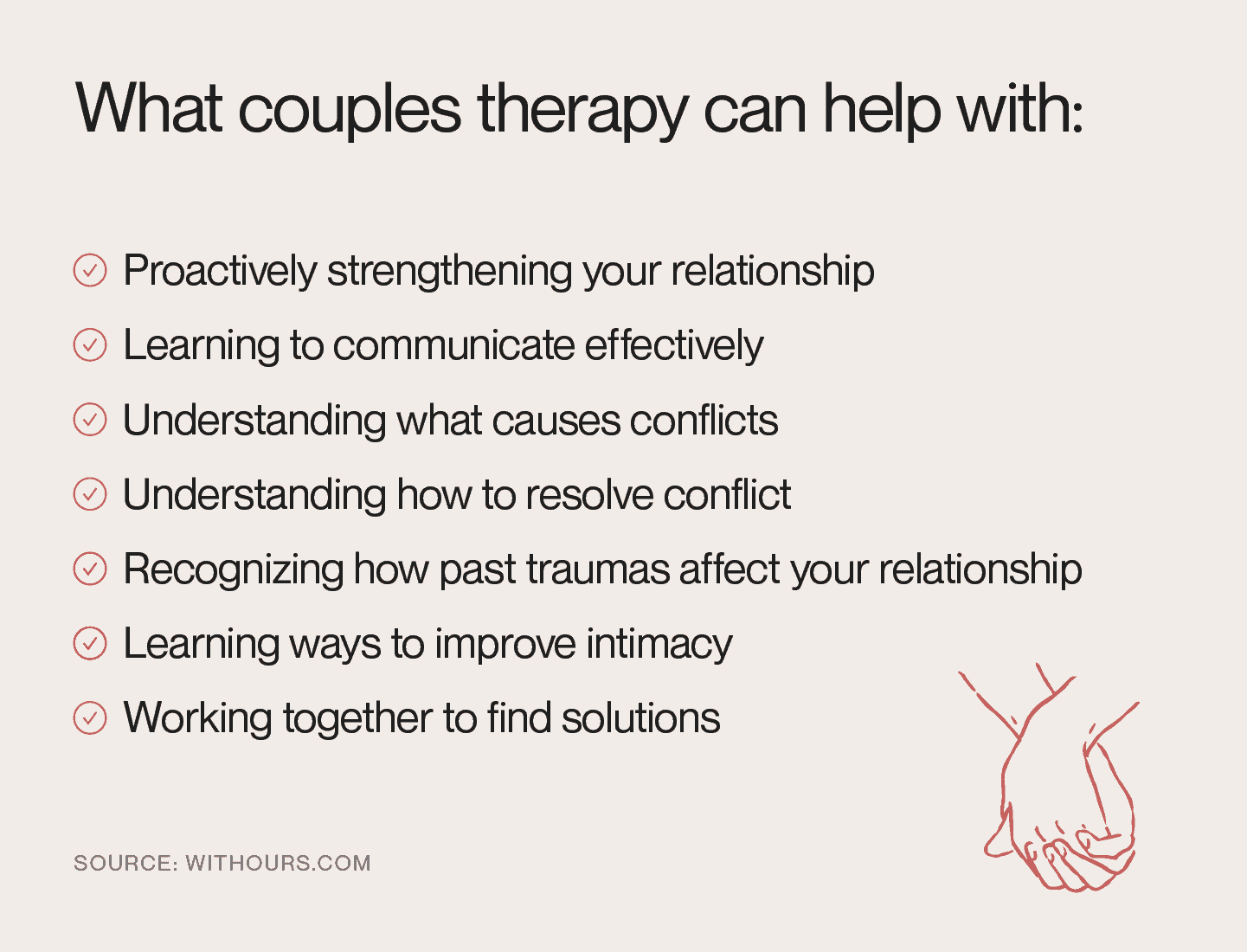What Does Aim Point Counseling Mean?
What Does Aim Point Counseling Mean?
Blog Article
The Facts About Aim Point Counseling Uncovered
Table of ContentsThe Only Guide to Aim Point CounselingSome Known Details About Aim Point Counseling Getting My Aim Point Counseling To WorkAim Point Counseling for DummiesThe smart Trick of Aim Point Counseling That Nobody is Talking AboutThe Aim Point Counseling Statements
The longitudinal style involves a pre-treatment study and two follow-up studies at 3- and 12-months post-intervention. The study is embeded in 8 Relationships Australia Victoria centres, throughout municipal, external suburbs, and regional/rural websites. Relationships Australia, a non-government organisation, is the biggest provider of pair coaching and partnership solutions in Australia.
These high rates of relationship break down have actually been continually linked with adverse health and wellness consequences for both grownups and children adhering to divorce/separation.
More About Aim Point Counseling
Longitudinal studies likewise recommend that youngsters of separation have a greater incidence of mental disorders, alcohol and drug usage, and risky sex-related behaviour [7] The impacts of separation and splitting up can be harmful, research suggests that high connection discord in undamaged pairs is likewise likely to have unfavorable results.
Research to date has actually determined both pair and specific factors that may contribute to relationship disharmony. These consist of connection complete satisfaction and commitment at the couple degree, and anxiety at the private degree.
The Buzz on Aim Point Counseling
While most studies show improvements in relationship fulfillment complying with couple coaching, they are restricted by the samples and actions used, mostly temporary follow-up time frameworks, and evaluations that do not account for the dyadic nature of couple information., is an additional generally investigated partnership result.
To sum up, research indicates that couple-specific variables along with individual aspects might forecast the end results of couple coaching and partnership services. The causal direction of these partnerships, however, is much less clear. These monitorings are very important, considering that, to validate and guide the application of relationship solutions such as pair counselling, empirical evidence must discover both the outcomes of connection services and the elements that forecast effective treatment.
For that reason, there is a growing consensus that efficiency research studies should be enhanced by performance study to best educate professional method [ 29] The minimal effectiveness research study that exists to date suggests that couple therapy can enhance end results such as relationship complete satisfaction [33,43], communication skills and general wellness [44], at the very least in some European nations.

We currently understand little about our website the profiles of couples that seek out relationship education and learning compared with those who look for partnership coaching, or the results of these programs. Nonetheless, anecdotal evidence suggests that there might be substantial distress among at the very least some pairs seeking partnership education. Connection education and learning programs differ from pair coaching as they are usually very structured, carried out in teams, and concentrate on a blend of four elements; understanding, comments, cognitive change, and skills training [45]
Aim Point Counseling - Truths
Feedback entails individuals finishing surveys concerning their partnership (e.g. measures of interpersonal issues), and receiving information on what their ratings indicate. Cognitive-behavioural approaches promote changing cognitions to help with positive connections.
These meta-analyses highlight restrictions in the existing literature on connection education. This example account may not stand for customers that commonly present for connection education and learning.
The Definitive Guide for Aim Point Counseling

Really little study has examined the relative advantages of couple counselling and relationship education programs. As customers are most likely to self-select into these solution types, it is not clear whether particular connection distress profiles existing to each solution kind, or undoubtedly whether there is an interaction in between providing profile, service type and end result.
(http://peterjackson.mee.nu/where_i_work#c2556)
Thus, we have actually consisted of a 12-month follow-up to assess longer-term fads and results. The research uses a variety of standardized outcome measures considering that some previous investigations have been criticised for their lack of standard assessment [50] The use of statistical evaluations that think freedom of data, such as t-tests, or ANOVAs, has been widespread in previous researches [ 44,49]
As a result, we recommend to use multi-level statistical modelling treatments that control for the inter-dependence of couple data to assess any therapy impacts. The certain aims of the ECC research study are to: 1. Map profiles of clients looking for area agency-based pair coaching vs. connection improvement programs in regards to socio-demographic and relationship indications (such as partnership satisfaction, relationship dedication, social issues, and factors for attending), along with wellness (such as anxiety, basic well-being) and health solution usage (eg.
2. Identify whether pair therapy and partnership education services improve 3- and twelve-month outcomes for partnership complete satisfaction, dedication, and depression, utilizing analytical analyses proper to pair information. 3. Identify the family member contributions of customer factors (individual and pair) and therapy/education aspects to outcomes at 3- and 12-months, and to sustainability of end results with time.
The Basic Principles Of Aim Point Counseling
Multi-level modelling to establish pre-post distinctions, controlling for dyadic (pair) degree. To add to the literature evaluating the efficiency of community-based pair counselling. The results will help clinical decision-making in community-based partnership solution settings, and expert training. 3. To figure out the family member contributions of client/couple and treatment variables to end results at 3- and 12-months, and to sustainability of results over time.
Report this page